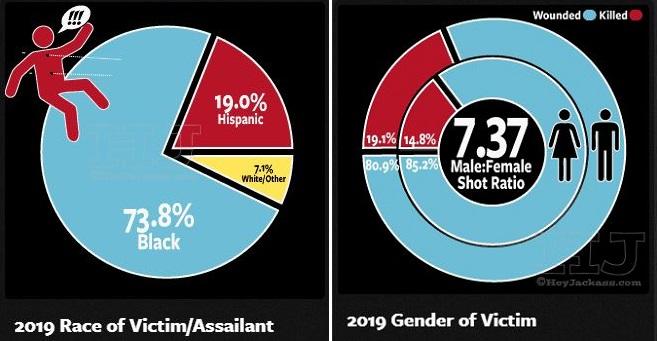Officials in the Democratic stronghold of Chicago’s Cook County, Illinois voted on Thursday to completely dismantle their database of more than 25,000 known or suspected gang members, according to the Chicago Sun Times.
The reason? The database is racist and inaccurate, according to opponents, as most of the people linked to gangs are black and Hispanic (meanwhile most victims and killers in Chicago are black males aged between 15 and 35, often with gang affiliations).

“The terms ‘gang association’ or ‘gang membership’ have become a form of criminalizing mostly young people of color,” said county Commissioner Alma Anaya – chief sponsor of the measure. “The passage of the ordinance will be a major step forward for Cook County. We will serve as a national model.”
While the Cook County Regional Gang Intelligence Database (RGID) is considered more accurate than the Chicago PD’s gang database since it collects information from inmates at Cook County Jail “who openly self-identify if they are gang affiliated during the intake process to prevent ending locked up with gang rivals,” RGID has come under fire after more than 400 dead people were discovered in the database, as first reported by ProPublica.
An earlier draft of the ordinance would have required the sheriff’s office to send written notifications to those individuals. But that language was removed amid concerns from the sheriff and some commissioners that it could expose the county to lawsuits.
The earlier draft also would have placed restrictions on gang affiliation data compiled by officials at the county jail. The sheriff’s office would have been responsible for an annual report detailing the race, age and gender of everyone it records as a gang member as well as the reasons why. –ProPublica
Instead of perhaps working to correct errors or create a mechanism for Cook county residents to have themselves removed from the database, Thursday’s vote will prohibit the Cook County Sheriff’s Office from “maintaining, re-creating or sharing information” on known or suspected gang members, while the list won’t be allowed to be shared with outside agencies. Furthermore, the sheriff’s office must “enact the final destruction” of the tool, according to the Sun Times.
“We needed it in writing,” Anaya said. “I think that the decommissioning that [Sheriff Tom Dart] pushed for was a great first step, but we still needed all of these other steps and all of these assurances that the community groups really wanted.”
One of those steps will be a public hearing within the next 90 days. At that meeting, Anaya says community members, organizers and others will try to develop a long term plan.
…
As of July, the database contained the names of 25,000 people suspected of being affiliated with more than 400 gangs and gang factions. More than 400 people in the database were listed as dead and 150 others had a gang listing of “unknown” or “null,” according to a report by ProPublica Illinois. –Chicago Sun Times
As ProPublica notes, the Sheriff’s office is just one of several law enforcement agencies which track known or suspected gang affiliations. The Chicago PD’s database contains over 133,000 people, while the state police force database has around 90,000 names in it. Nearly 25% of the CPD database are juveniles.
Considered the most “gang-infested city in the US” in a 2011 report, Chicago had more than 70 gangs with over 150,000 members according to the Chicago Crime Commission, which accounted for 61% of homicides that year.
In 2012, Mayor Rahm Emanuel dismantled the Chicago Police Department’s anti-gang unit and reassigned the officers to beat patrols despite the murder rate spiking 40% over the previous year.
via ZeroHedge News https://ift.tt/2NoUZPQ Tyler Durden
